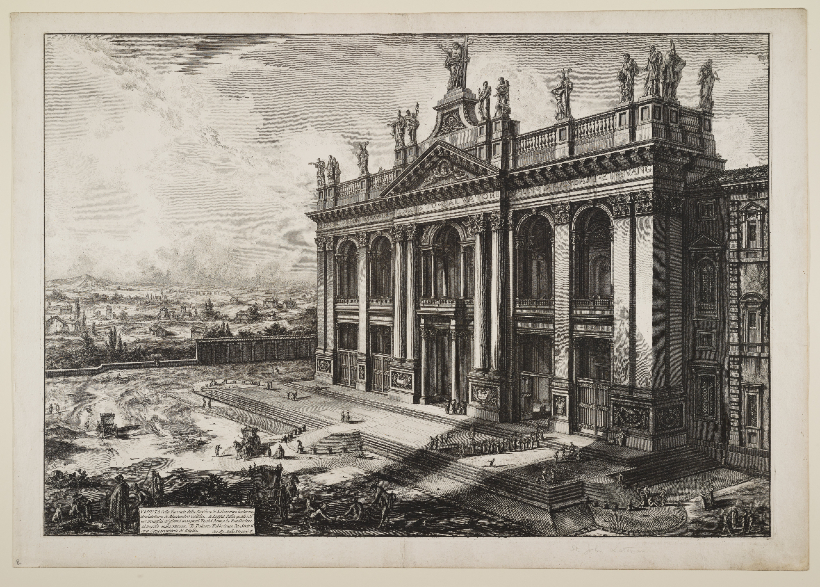
If you have been following this series, you will remember that Theophylact, virtual controller of Rome, and his wife, Theodora, were able to run the politics of the Catholic Church from the beginning of the 10th century. Their older daughter, Marozia, followed suit, followed by her son. Now the other daughter, Theodora II joined the picture. Theodora II married a consul, John Crescentius, who was consecrated a bishop in later life. They had three sons and two daughters. Enter, John Crescentius Jr!
A talented, good man, John was brought up at the Lateran Palace and was a member of the schola cantorum. He went through all the clerical levels up to deacon. Then he took an active part in the papal administration, serving in the chancery under Popes John XII and Leo VIII. In 962, John was consecrated bishop of Narni. As such, he participated in the 963 synod of Rome which deposed John XII and the 964 synod which reinstated him.
Pope Leo VIII died around 1 March 965. The Roman nobility asked Emperor Otto to reinstate the imprisoned Benedict V. Otto refused and Benedict, coincidentally, died that July. Otto’s envoys suggested John Crecentius Jr as a compromise. He was elected unanimously, on 1 October 965.
Pope John’s first task was to reduce the power of the Roman nobles only to make his own family acquire important positions to support him. Another thing he did was develop closer ties with Otto. The emperor was in Germany, however, and the Roman nobles started their intrigue against John. They resented John’s support by foreigners. So, Peter, Prefect (Mayor) of Rome, Rofred, Count of Roman Campagna (the suburbs) and Stephen, the Vatican financial manager, declared a revolt. The Roman militia captured John on 16 December and imprisoned him in the Castel Sant’Angelo, then moved him out of town to one of Rofred’s castles.
Emperor Otto heard of the revolt soon after the new year and began forming an army. Before he could march, Pope John escaped the castle and ran to Capua, near Naples. Under the protection of the Prince of Capua, Pandulf Ironhead, John was so thankful, he made Capua a metropolitan see and consecrated Pandulf’s brother, John, as the first archbishop 14 August 966.
As Otto crossed into Italy, the pope’s supporters rose. The pope’s nephew, also named John Crescentius, killed Rofred and Stephen. John knew he was safe, so he left Capua and crossed into Sabina. He met up with his brother-in-law, Count Benedict, who offered his support, a little belatedly, it would seem. Finally, John had Rome’s support and he returned 14 November 966, having been gone almost a year. He planned to be lenient.
Then Otto arrived. He was not lenient. Two consuls were banished to Germany. Every top military leader of the twelve districts of Rome were hung. Others were executed or blinded. Peter, the prefect, was hung and humiliated, cast into prison and finally banished.
The emperor was repaid by attending two synods early in the new year, where he got several ecclesiastical improvements he wanted, including an archbishopric for Magdeburg. Ravenna and other lands were returned to the papal see.
At Christmas of that year, Otto had his son, Otto Jr, aged 12, crowned co-emperor. Otto wanted a marriage alliance with Byzantium. And he wanted Pope John to handle the negotiations. Due to varying customs, John didn’t do too well. In response, the Patriarch of Constantinople increased his jurisdiction of southern Italy. This led to a battle of synods until the emperor of Byzantium died in 969. The next emperor, John I Tzinsiskes, was more agreeable. Young Otto II married a princess after five years, with the pope presiding.
Pope John expanded the Church into Poland in 968 and approved the bishopric of Prague, although it was not established until after his death.
He wrote bulls supporting King Edgar and Archbishop Dunstan of England in their attempts to improve the morality of the clerics and preventing making money from abbeys.
He answered requests for help both financial and spiritual, and offered privileges for abbeys and monasteries in various parts of Europe.
970 marked the beginning of feudalism when Pope John gave his sister and her children a hereditary lease to the town of Praeneste, where they made money annually off the backs of the townspeople for years.
It is during his reign that we find the earliest mention of the blessing of church bells.
This pope died 6 September 972, at around 45 years of age. He was buried in St. Paul’s Outside the Walls

Recent Comments